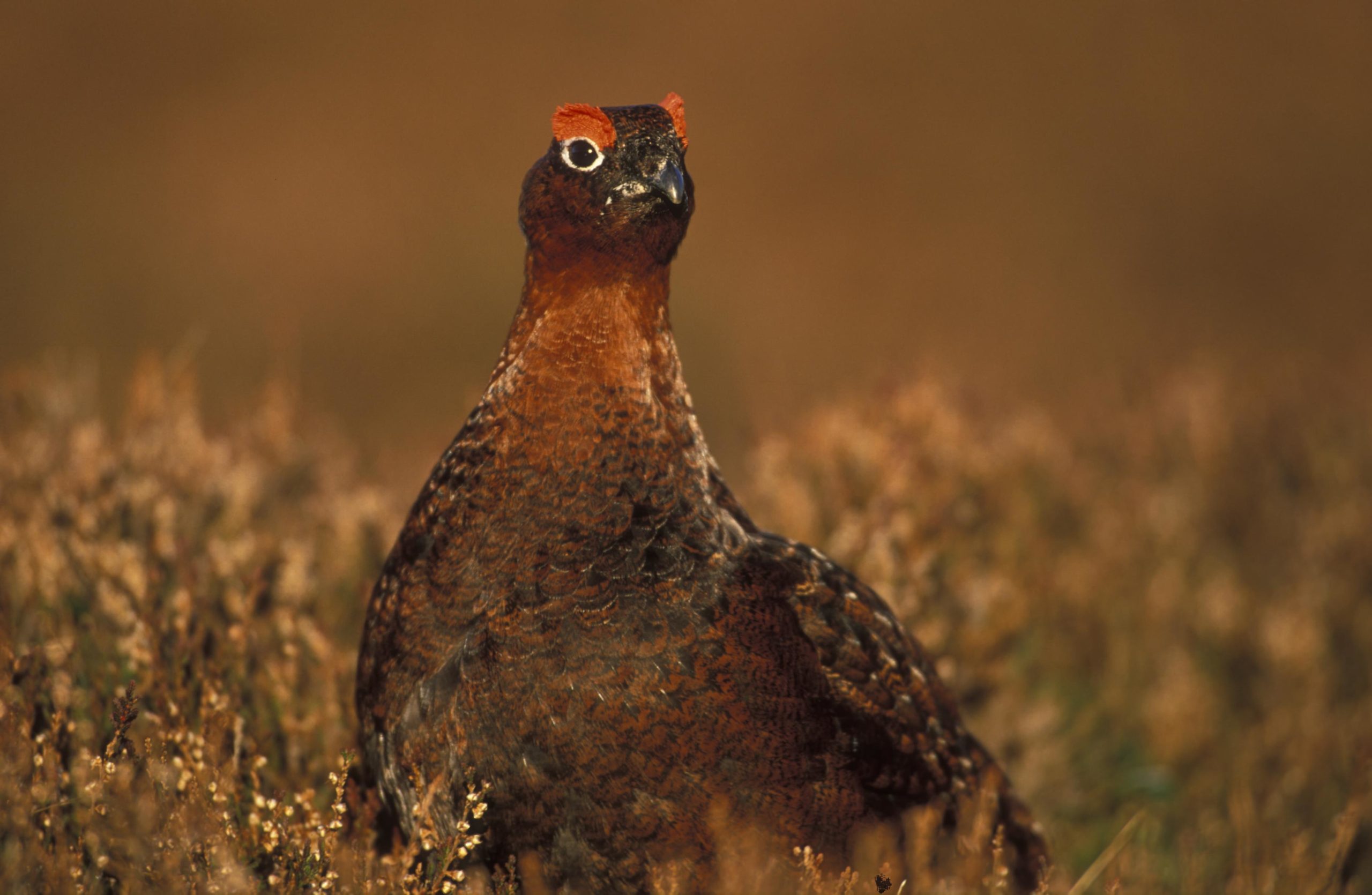
I happened to be in London for a day of business meetings this past week. While there, some members of the broking fraternity invited me to join them for a lunch. Of course, I accepted. I mean, I like to eat lunch. And meeting with members of the broking fraternity is something I have to do from time to time. So I thought I might be able to kill two birds with one stone.
A thought that was somewhat prescient, given the lunch in question turned out to be a lot more than the average steak and business chit-chat I had been expecting. Rather, as my host enthused in a brief cryptic email I received just as I was making my way to the restaurant: “We have grouse!”
***
The venue for lunch was a “gastropub” on the edge of the City of London, called “The Jugged Hare” – the name of the place in reference to a not-so-often-found-these-days traditional British dish that involves catching and hanging a wild hare, aging it, then stewing it in its own blood. This, I suppose, ought to have given me a clue as to what dining oddities were heading my way…
As too should the decor of the Jugged Hare, a large dining room of oak floors, wood-paneled walls and leather-backed seats. Oh, and also the heads and carcasses of assorted stuffed animals – deer, chickens, rabbits etc. – mounted prominently on every wall, and also hanging down from ceiling beams. The place was packed with pasty-looking men in pin-stripe suits (literally, there was not a single woman to be seen), and the atmosphere was so “old-boys club” I immediately assumed the Jugged Hare must’ve been there since time immemorial, when in fact it had only opened in 2012.

A quick visit to the Jugged Hare’s website as I waited to be seated told me that the restaurant has a “focus on both traditional and lesser-known (but always seasonal) British ingredients.” Which I think is just a polite way of saying “If we can hunt it, fish it or kill it, anywhere in the UK, then we’ll damned well put it on your plate.”
Or at least that is how it seemed to me, because no sooner had we sat down than our starters arrived at the table. Several wooden boards heaped high with a wide-ranging collection of edibles made from all the odd bits of the animal: smoked lambs heart, confit rabbit leg, crispy strips of fried pig’s ear (with apple sauce, naturally), venison scotch egg, black pudding croquettes, and something that I think was made of minced fowl, but I can’t say for sure.
To be fair though, it was all totally delicious. So I joyfully tucked in, even if my lunch-mates seemed entirely uninterested in the spread. Instead, they were engaged in a heated discussion about – not to mention also practically foaming at the mouth in anticipation of – our main course special order. Or, as it was described on a small piece of paper stapled to the menu: “THE GAME SEASON IS BACK! Very first of the new season’s red grouse, shot yesterday morning on a beautiful heather moor in Eggleston (North Yorkshire).”
Apparently, earlier that day, three of these recently deceased birds had been reserved just for us. And the platter of mystery-meat starters was therefore just a sideshow; a few mindless nibbles designed to kill the forty minutes or so needed for our grouse to be prepped. And which, or so my host explained, “is going to be a rare treat – especially given that it was just the Glorious Twelfth!”
I nodded knowingly, not wanting to seem a complete cultural Neanderthal. But truthfully, I had no clue what on earth he was going on about. Obviously, I had much to learn.

***
The grouse is a wild bird, about the size of a tiny chicken, found only in the UK. They come in red and black varieties (the black is endangered, the red is hunted and eaten), and live exclusively on heather moors in the north of England and some parts of Scotland.
Grouse are almost always wild, hard to farm or breed domestically. Their numbers fluctuate year-by-year in response to weather conditions, food availability, and parasites. And a grouse flies really fast, at about 70 miles per hour, and is entirely unpredictable in flight, often changing direction rapidly.
All of which explains why shooting grouse is difficult, and thus considered the pinnacle of all British hunting sports (of which, might I add, there are quite a few – if left to their own devices the British upper class would make a sport out of shooting everything running around their countryside, from pheasants to quails to hares to foxes to immigrant Polish workers).
However, even if you are a good shot, snagging a grouse is not as simple as it sounds. Because as with many things old and British, a considerable amount of pomp and ceremony is involved.
First, there is the matter of timing. You see, going after grouse is not allowed until August 12th of each year, and then only until December 10th. The opening date of the “season” is thus one that is massively anticipated by avid grousers (is that a word?) across the UK, and has come to be known amongst aficionados as The Glorious Twelfth. Our lunch, coming as it was only a couple of days after the Glorious Twelfth, meant we were among the privileged few sampling the very first of the year’s batch.
Then there is how it is done. You see, you can’t just wander out into the nearest heather moor, rifle in hand, and take pot shots at the first bird you see. Rather, proper grouse shooting etiquette requires a veritable army of folks devote themselves to the task.
Specifically, you and about 10 others – the “guns” – should go out into the middle of the grouse moor and take up position in “the butts”, trenches dug strategically across the moor. “Beaters” will then walk through the moors, blowing whistles and waving flags to frighten the grouse out of their nests, and drive them towards where you are waiting in the butts. You can then fire away at the birds as they pass overhead, the shot grouse will drop to the ground, and their carcasses will be fetched by specially trained dogs. All very civilized, and all very British, don’t you think?
And finally, there is what it costs: grouse shooting ain’t cheap. The fees for a single gun for a day of grouse shooting can run to $8,000; a whole shoot up to $80,000 for the day. Plus about $100 per bird shot. Not to mention the costs of gun hire, other equipment, and traditional grouse-shooting apparel (3/4 length pants, long socks, and ridiculously twee jackets).
So basically, if you want to go out for a day of grouse shooting and you don’t want to take out a second mortgage, you need to be a member of the British aristocracy, an Arab sheikh, a Russian oligarch, or the beneficiary of a very generous corporate expense account.
Alternatively, you can just show up at the Jugged Hare the next day, skip all the nonsense, and eat one of the damn things.
***

So, back to the meal – in the time it took for my colleagues to explain the finer details of grouse culture to me, our birds had been cooked, and had now been delivered to the table waiting to be consumed. They had been prepared in traditional style – fire-roasted whole, and accompanied by a simple bread sauce, red wine jus, savoy cabbage, game chips, and a pate made of the grouse’s own liver. It was all artfully arrayed on individual wooden boards, and certainly looked appetizing – like a perfectly cooked baby chicken.
But, and here I must confess, it certainly didn’t taste like chicken. Rather, it was more of an “acquired taste”. That is, kind of gross, because the grouse was surprisingly dark and gamey, a bit like what I imagine eating roast rat might be like. Although I would never have confessed as much to my hosts, because they had hoed into their birds with evident gusto, and were now in a frenzy of semi-orgasmic grouse delight.
“What do you think?” someone asked me. I swallowed gamely (pardon the pun), nodded politely, and replied as diplomatically as I could: “Yes, it’s good, interesting flavor… a lot stronger than I expected.” Little did I know, but this was a pretty astute reply on my part, because apparently the taste of grouse – like fine wine – fluctuates season to season, based on the weather, the quality of food available to the birds, and a whole host of other factors discernible only to true grouse enthusiasts. So my comment set off a long discussion as to the best and worst grouse years in living memory. As one of my lunch mates explained it: “As rule of thumb, one year in seven is a bad year for grouse – 2017 was one of the worst vintages on record!”
And then, on my next mouthful, I bit into something disturbingly crunchy, so hard I thought I might have chipped a tooth. I spat the offending matter onto my plate, and saw it was a small piece of metal. This seemed wrong to me and I made to complain to the waiter. But my host stopped me.
“Relax, it’s part of eating grouse!” he said chirpily, at the same time pointing to a small line at the bottom of the menu. It read: “Beware – good game dishes should always contain shot.” This being the first time I’d ever had the dubious distinction of dining on ammunition.
***
I’ve eaten a lot of weird stuff in my life. And on the face of it, eating a grouse is far from weird – it’s just a little bird, really. But nonetheless, I found my first grouse dinner to be a bizarre-foods experience of the highest order.
I’ve said it before in this blog: if you put culinary arrogance aside, you will often find that even in your own cultural corner, you can wind up eating some really weird shit, replete with ancient tradition, strange ceremony, and odd flavors. It really is one of the great joys of travel.




